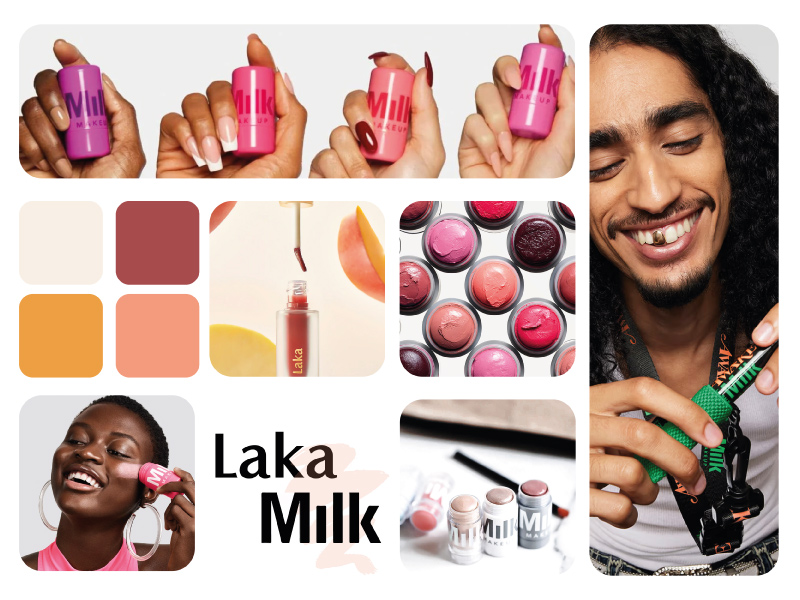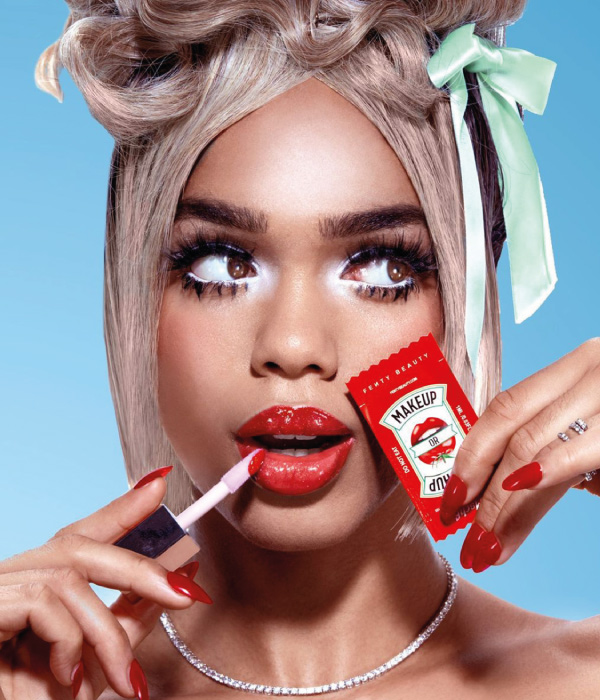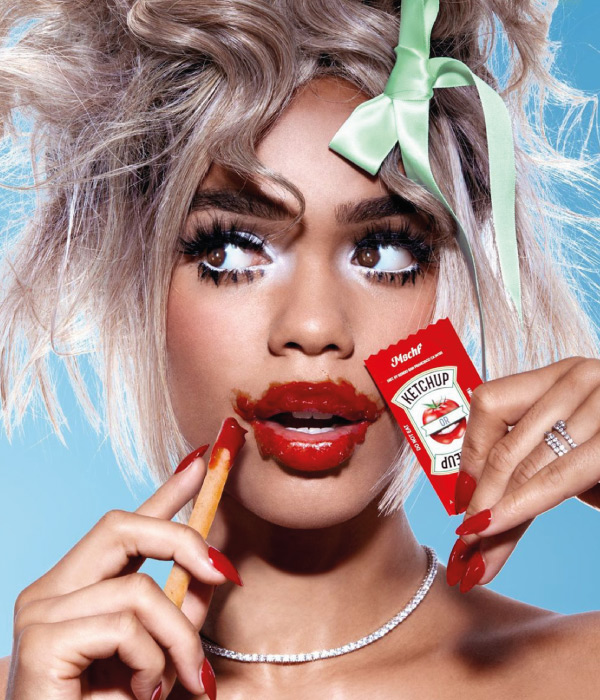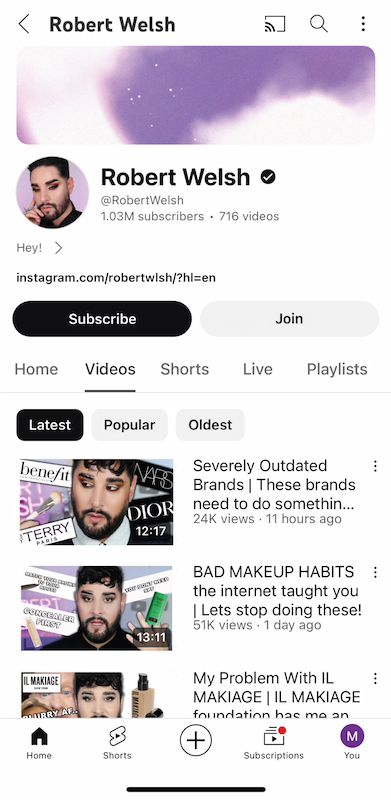The latest report published by Stylus highlights the exponential growth of the beauty market, reaching $85 billion by 2024, with make-up leading the way (33% of total sales).
The cosmetics market is constantly evolving, with the emergence of distinct trends: the use of make-up as a means of countering so-called conventional and traditional beauty, and the rise of inclusive and accessible cosmetics, for all.
The arrival of new players is prompting established brands to reinvent themselves and rethink their strategy to stand out. But how? That’s what we’re going to discover!
Makeup as a form of self expression
Consumers are looking for simpler ingredients, but also want to have fun and use cosmetics as a form of self expression.
In the 2024 edition of our Design Trends, we highlighted the « Out of the Box » trend. The new generation is rejecting the dictates of traditional beauty and aspires to greater transparency. They use makeup as a means of expressing their personality and embracing imperfections, without concern for societal judgment.
The idea of « perfection » is challenged, and « imperfection » or what could be perceived as original is brought to the fore.
For now on, authenticity is elevated to the status of perfection.
Brands now offer products that let you play with textures and colors.
Between Laka (Korea) which offers chromatic products that reflect light or Milk Makeup (US) with its Jelly Blush, gelled blushes, brands are encouraging us to use makeup in a playful way and to express our personality!
Credit: Laka and Milk Makeup
Crédit : Fenty Beauty
Talking about originality, let’s take Fenty Beauty as an example.
The brand has launched a palette of 6 highly original red and pink lip glosses, presented in the form of little restaurant sauce sachets, among which is hidden… ketchup. You can either discover the real gloss or come across real ketchup. A brilliant marketing move that has once again showcased the brand’s uniqueness and innovation in the face of its many competitors.
Embrace the strange, experiment, and encourage your target audiences to play with the products to step out of their comfort zone.
The rise of men's cosmetics
The market for men’s beauty products continues to grow, and according to Statista, it is set to reach 105 billion euros by 2028. There are many factors contributing to this surge in the men’s cosmetics.
Social media plays a significant role in the surge of cosmetics dedicated to men. Men now showcase their beauty routines on social media, accumulating billions of views. Men’s cosmetics are brought into the spotlight, allowing these gentlemen to realize both the aesthetic and dermatological benefits.
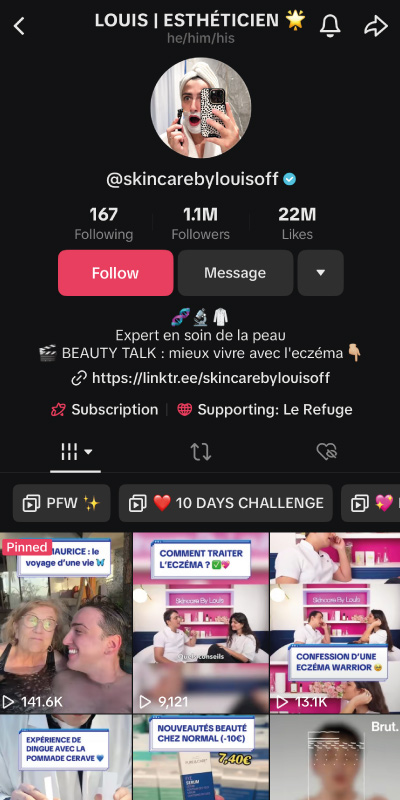
The number of male influencers in this market has been steadily growing since the global pandemic. In the US, Robert Welsh, an American YouTuber with over 1 million subscriber, posts videos featuring make-up tutorials, advice, and brand reviews. In France, Skincarebylouisoff, an influencer mainly active on TikTok with over 1.1 million subscribers, focuses his content on skincare and skin issues.
We’re witnessing an increasing number of men embracing cosmetics, which helps normalize their usage among males.
Famous figures such as Harry Styles and Jared Leto, who don’t hesitate to wear make-up and nail varnish, or Sam Smith, who shows off his beauty routine on Vogue’s Youtube channel, play a crucial role in breaking down these gender stereotypes.
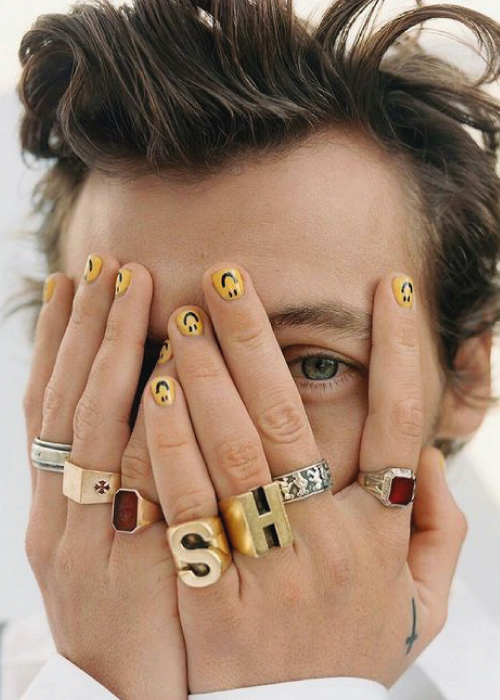
Credit: Jenny Longworth
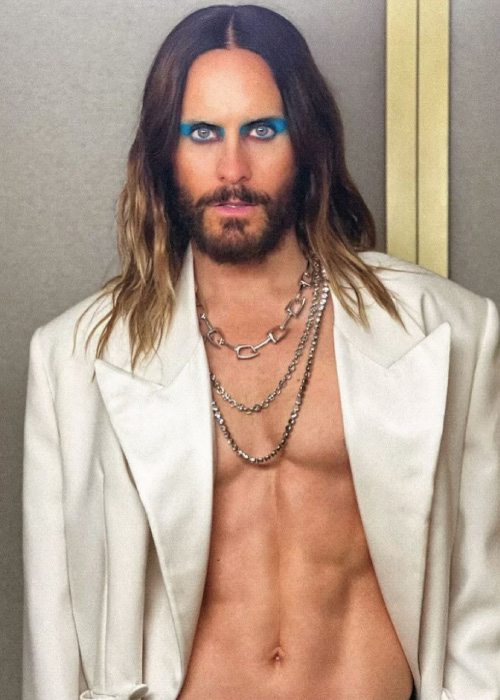
@jaredleto instagram account
@vogue YouTube account
The market is constantly evolving, and more and more men are becoming aware of their skin’s needs and the aesthetics benefits that make-up can provide. Consumers’ habits are changing and evolving!
To all brands, become active participants in this change! It is time for you to respond to this growing demand, while promoting inclusivity in this still highly standardized beauty industry.
One motto? Inclusion.
According to the World Bank, one billion people – 15% of the global population – have a disability. The inclusion of people with disabilities continues to gain ground. They are increasingly being highlighted and “considered” by brands.
We mentioned it in our article on Diversity and Design: many brands denounce the lack of representation in this market
Gucci had chosen to name Ellie Goldstein, who has Down syndrome, as its brand ambassador. Although this choice has helped advance the cause, ‘media’ representation alone is no longer sufficient. Inclusivity must now be embedded in product design.
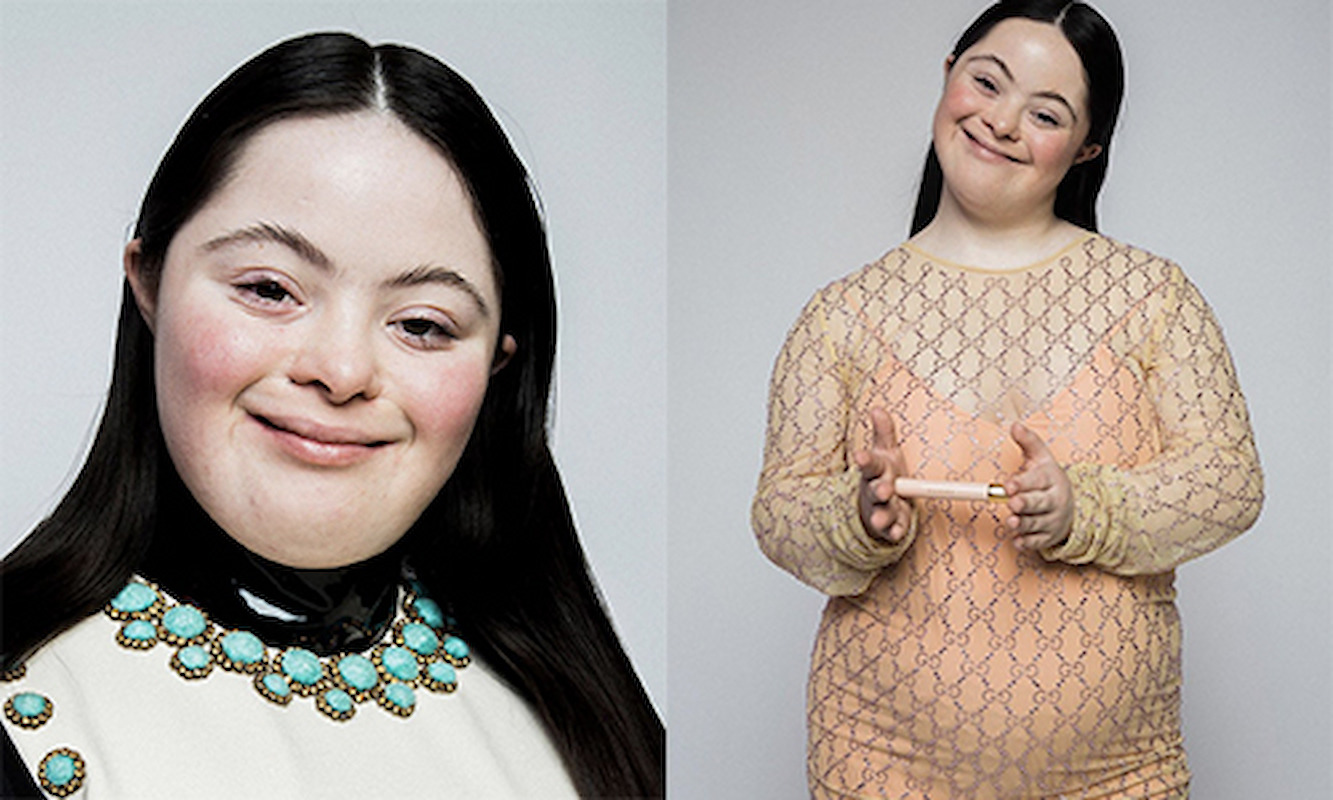
Credits: informations.handicap.fr
The focus is on universal design: creating for everyone, regardless of their unique challenges, be it mobility issues, visual impairments, autism, or tremors associated with Parkinson’s disease.
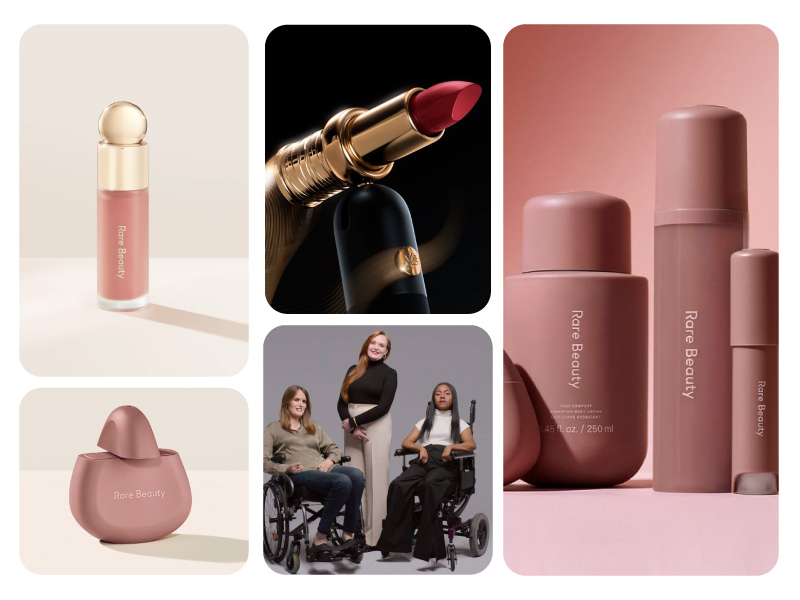
Credits: Rarebeauty.com et Lancôme.fr
Rare Beauty, a makeup brand founded by Selena Gomez who suffers from Lyme disease, was designed for people with physical disabilities. The packaging is ergonomic, with each featuring a ball for easier product opening.
Lancôme, part of L’Oréal Group, presented its Hapta technology at the CES Show in Las Vegas in early 2023: a computerized, portable make-up applicator. This revolutionary device, based on AI, will help people with limited dexterity to apply lipstick or mascara. Through this technology, Lancôme is committed to making beauty inclusive and accessible to all.
Following the life cycle analysis of a product, where the product is carefully thought out and designed to be more sustainable, it must now also be designed to be accessible and inclusive.
To discover more trends, download right now our 2024 Useful Design Trends report.
Do you have a challenge, a project, something else, for which you need support?
The latest report published by Stylus highlights the exponential growth of the beauty market, reaching $85 billion by 2024, with make-up leading the way (33% of total sales).
The cosmetics market is constantly evolving, with the emergence of distinct trends: the use of make-up as a means of countering so-called conventional and traditional beauty, and the rise of inclusive and accessible cosmetics, for all.
The arrival of new players is prompting established brands to reinvent themselves and rethink their strategy to stand out. But how? That’s what we’re going to discover!
Makeup as a form of self expression
Consumers are looking for simpler ingredients, but also want to have fun and use cosmetics as a form of self expression.
In the 2024 edition of our Design Trends, we highlighted the « Out of the Box » trend. The new generation is rejecting the dictates of traditional beauty and aspires to greater transparency. They use makeup as a means of expressing their personality and embracing imperfections, without concern for societal judgment.
The idea of « perfection » is challenged, and « imperfection » or what could be perceived as original is brought to the fore.
For now on, authenticity is elevated to the status of perfection.
Brands now offer products that let you play with textures and colors.
Between Laka (Korea) which offers chromatic products that reflect light or Milk Makeup (US) with its Jelly Blush, gelled blushes, brands are encouraging us to use makeup in a playful way and to express our personality!
Credit: Laka and Milk Makeup
Talking about originality, let’s take Fenty Beauty as an example.
The brand has launched a palette of 6 highly original red and pink lip glosses, presented in the form of little restaurant sauce sachets, among which is hidden… ketchup. You can either discover the real gloss or come across real ketchup. A brilliant marketing move that has once again showcased the brand’s uniqueness and innovation in the face of its many competitors.
Embrace the strange, experiment, and encourage your target audiences to play with the products to step out of their comfort zone.
The rise of men's cosmetics
The market for men’s beauty products continues to grow, and according to Statista, it is set to reach 105 billion euros by 2028. There are many factors contributing to this surge in the men’s cosmetics.
Social media plays a significant role in the surge of cosmetics dedicated to men. Men now showcase their beauty routines on social media, accumulating billions of views. Men’s cosmetics are brought into the spotlight, allowing these gentlemen to realize both the aesthetic and dermatological benefits.

The number of male influencers in this market has been steadily growing since the global pandemic. In the US, Robert Welsh, an American YouTuber with over 1 million subscriber, posts videos featuring make-up tutorials, advice, and brand reviews. In France, Skincarebylouisoff, an influencer mainly active on TikTok with over 1.1 million subscribers, focuses his content on skincare and skin issues.
We’re witnessing an increasing number of men embracing cosmetics, which helps normalize their usage among males.
Famous figures such as Harry Styles and Jared Leto, who don’t hesitate to wear make-up and nail varnish, or Sam Smith, who shows off his beauty routine on Vogue’s Youtube channel, play a crucial role in breaking down these gender stereotypes.

Credit: Jenny Longworth

@jaredleto instagram account
@vogue YouTube account
The market is constantly evolving, and more and more men are becoming aware of their skin’s needs and the aesthetics benefits that make-up can provide. Consumers’ habits are changing and evolving!
To all brands, become active participants in this change! It is time for you to respond to this growing demand, while promoting inclusivity in this still highly standardized beauty industry.
One motto? Inclusion.
According to the World Bank, one billion people – 15% of the global population – have a disability. The inclusion of people with disabilities continues to gain ground. They are increasingly being highlighted and “considered” by brands.
We mentioned it in our article on Diversity and Design: many brands denounce the lack of representation in this market

Credits: informations.handicap.fr
Gucci had chosen to name Ellie Goldstein, who has Down syndrome, as its brand ambassador. Although this choice has helped advance the cause, ‘media’ representation alone is no longer sufficient. Inclusivity must now be embedded in product design.
The focus is on universal design: creating for everyone, regardless of their unique challenges, be it mobility issues, visual impairments, autism, or tremors associated with Parkinson’s disease.

Credits: Rarebeauty.com et Lancôme.fr
Rare Beauty, a makeup brand founded by Selena Gomez who suffers from Lyme disease, was designed for people with physical disabilities. The packaging is ergonomic, with each featuring a ball for easier product opening.
Lancôme, part of L’Oréal Group, presented its Hapta technology at the CES Show in Las Vegas in early 2023: a computerized, portable make-up applicator. This revolutionary device, based on AI, will help people with limited dexterity to apply lipstick or mascara. Through this technology, Lancôme is committed to making beauty inclusive and accessible to all.
Following the life cycle analysis of a product, where the product is carefully thought out and designed to be more sustainable, it must now also be designed to be accessible and inclusive.
To discover more trends, download right now our 2024 Useful Design Trends report.
Do you have a challenge, a project, something else, for which you need support?
The latest report published by Stylus highlights the exponential growth of the beauty market, reaching $85 billion by 2024, with make-up leading the way (33% of total sales).
The cosmetics market is constantly evolving, with the emergence of distinct trends: the use of make-up as a means of countering so-called conventional and traditional beauty, and the rise of inclusive and accessible cosmetics, for all.
The arrival of new players is prompting established brands to reinvent themselves and rethink their strategy to stand out. But how? That’s what we’re going to discover!
Makeup as a form of self expression
Consumers are looking for simpler ingredients, but also want to have fun and use cosmetics as a form of self expression.
In the 2024 edition of our Design Trends, we highlighted the « Out of the Box » trend. The new generation is rejecting the dictates of traditional beauty and aspires to greater transparency. They use makeup as a means of expressing their personality and embracing imperfections, without concern for societal judgment.
The idea of « perfection » is challenged, and « imperfection » or what could be perceived as original is brought to the fore.
For now on, authenticity is elevated to the status of perfection.
Brands now offer products that let you play with textures and colors.
Between Laka (Korea) which offers chromatic products that reflect light or Milk Makeup (US) with its Jelly Blush, gelled blushes, brands are encouraging us to use makeup in a playful way and to express our personality!
Credit: Laka and Milk Makeup
Talking about originality, let’s take Fenty Beauty as an example.
The brand has launched a palette of 6 highly original red and pink lip glosses, presented in the form of little restaurant sauce sachets, among which is hidden… ketchup. You can either discover the real gloss or come across real ketchup. A brilliant marketing move that has once again showcased the brand’s uniqueness and innovation in the face of its many competitors.
Crédit : Fenty Beauty
Embrace the strange, experiment, and encourage your target audiences to play with the products to step out of their comfort zone.
The rise of men's cosmetics
The market for men’s beauty products continues to grow, and according to Statista, it is set to reach 105 billion euros by 2028. There are many factors contributing to this surge in the men’s cosmetics.
Social media plays a significant role in the surge of cosmetics dedicated to men. Men now showcase their beauty routines on social media, accumulating billions of views. Men’s cosmetics are brought into the spotlight, allowing these gentlemen to realize both the aesthetic and dermatological benefits.
The number of male influencers in this market has been steadily growing since the global pandemic. In the US, Robert Welsh, an American YouTuber with over 1 million subscriber, posts videos featuring make-up tutorials, advice, and brand reviews. In France, Skincarebylouisoff, an influencer mainly active on TikTok with over 1.1 million subscribers, focuses his content on skincare and skin issues.

Credit: Jenny Longworth
We’re witnessing an increasing number of men embracing cosmetics, which helps normalize their usage among males.
Famous figures such as Harry Styles and Jared Leto, who don’t hesitate to wear make-up and nail varnish, or Sam Smith, who shows off his beauty routine on Vogue’s Youtube channel, play a crucial role in breaking down these gender stereotypes.
@vogue YouTube account
The market is constantly evolving, and more and more men are becoming aware of their skin’s needs and the aesthetics benefits that make-up can provide. Consumers’ habits are changing and evolving!
To all brands, become active participants in this change! It is time for you to respond to this growing demand, while promoting inclusivity in this still highly standardized beauty industry.
One motto? Inclusion.
According to the World Bank, one billion people – 15% of the global population – have a disability. The inclusion of people with disabilities continues to gain ground. They are increasingly being highlighted and “considered” by brands.
We mentioned it in our article on Diversity and Design: many brands denounce the lack of representation in this market.
Gucci had chosen to name Ellie Goldstein, who has Down syndrome, as its brand ambassador. Although this choice has helped advance the cause, ‘media’ representation alone is no longer sufficient. Inclusivity must now be embedded in product design.

Credits: informations.handicap.fr
The focus is on universal design: creating for everyone, regardless of their unique challenges, be it mobility issues, visual impairments, autism, or tremors associated with Parkinson’s disease.

Credits: Rarebeauty.com et Lancôme.fr
Rare Beauty, a makeup brand founded by Selena Gomez who suffers from Lyme disease, was designed for people with physical disabilities. The packaging is ergonomic, with each featuring a ball for easier product opening.
Lancôme, part of L’Oréal Group, presented its Hapta technology at the CES Show in Las Vegas in early 2023: a computerized, portable make-up applicator. This revolutionary device, based on AI, will help people with limited dexterity to apply lipstick or mascara. Through this technology, Lancôme is committed to making beauty inclusive and accessible to all.
Following the life cycle analysis of a product, where the product is carefully thought out and designed to be more sustainable, it must now also be designed to be accessible and inclusive.
To discover more trends, download right now our 2024 Useful Design Trends report.

